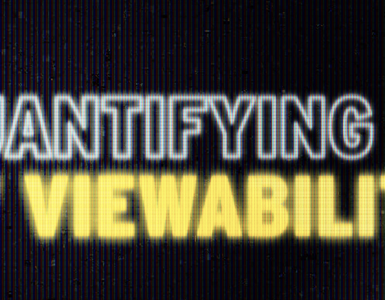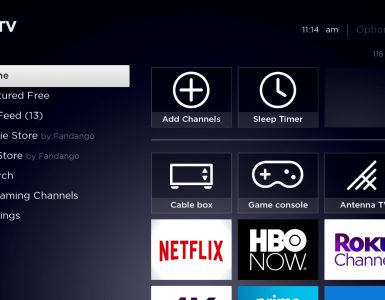SpotX, the online video advertising platform primarily known for it’s supply side platform and ad serving capabilities, was founded 12 years ago and was acquired three years ago by RTL Group. In 2007, launching a video-only platform was far from a sure bet. For perspective, YouTube was founded just two years earlier, in 2005, and online video was in its beginning stages.
SpotX was successful not only because it was first to market but also because its product was better. This same winning formula is again fueling the company’s dominance in the connected TV and over the top space.
On the publisher side, SpotX is locking in a exclusive partnerships, recently announcing an expanded partnership with AMC to power programmatic monetization for OTT video through Halloween. fuboTV, Gannett, Microsoft, Pluto TV, Roku, Samba TV, Sling TV, and Vudu by Walmart, among many others, are employing SpotX’s technology.
And with its online video, CTV and OTT expertise and data, SpotX has also been able to scale a Demand Facilitation Team, giving the company access to brands, agencies, and DSPs. According to Mike Evans, SVP of Demand Facilitation at SpotX, the company was the first SSP to start a Demand Facilitation Team, which has grown from one person to 60 sellers.
For more on SpotX’s AMC partnership, Demand Facilitation Team, and its CTV and OTT prescience, we spoke with Evans:
Found Remote: What’s the benefit to a publisher like AMC to grant exclusivity to SpotX as opposed to leveraging multiple sources?
Mike Evans: In CTV, there are only a few players with the experience and capabilities needed to support the space. By working with only one supply-side platform, or SSP, you avoid market confusion and inflation of inventory, and you have the ability to work closely with that SSP partner to ensure your story is unified across direct and programmatic sales.
FR: How does SpotX’s Demand Facilitation Team work with publisher sales teams (like AMC’s) to ensure that the inventory is filled?
Evans: SpotX’s Demand Facilitation Team works with advertisers including brands, agencies,
and demand side platforms, or DSPs, and essentially touts the benefits of the
publisher’s inventory. We can also serve as an extension to the publisher’s
internal selling arm.
Many advertisers work with us because of our programmatic infrastructure, our close relationships with premium media owners, our ability to leverage first- and third-party data, the full transparency we offer, and our expert service.
FR: SpotX has been around for 12 years, but has continued to build steam as a leader in the CTV and OTT space. How has the company been able to adapt so well to the changing media landscape?
Evans: In the video ecosystem today, you essentially have two worlds. On one hand, there is the world of online video, in which you have pre-roll advertising, typically in front of short-form, VOD content, that is often consumed on desktop, tablet, and mobile. On the other hand, you have OTT, or virtual pay-tv, in which you have pre-roll and midroll ad units, in what is often long-form (VOD or live) content, and is overwhelmingly consumed on the big screen. This bucket includes traditional national and local television programmers, virtual MVPDs (like Sling TV or DirectTV, newer entrants like fuboTV/Tubi/Pluto), and even device manufacturers (Vizio, Roku, Samsung, etc.) who are getting into the media business and acquiring ad rights.
OTT brings its own set of challenges, some technical and other based on ad policies and business rules that are rooted in the world of traditional television. For example, effectively monetizing large live sporting events requires specialized infrastructure to handle the demands of huge QPS (queries per second) spikes, specialized software to manage the unique strains that live content places on pacing and other campaign delivery algorithms, and a media planning operation built to meet unpredictable inventory spikes.
SpotX has flourished in the OTT space by demonstrating leadership in solving the numerous challenges that are unique to OTT like live content monetization, addressable advertising, managing competitive separation, building tools to speed the convergence of linear and digital, and more.
We started as a video-only tech platform and never diverted from that course. We recognize that to be a successful company, we have to be extremely agile and be able to shift with the market which is always evolving. Early on, we started to see indications that the OTT space was growing because viewership was expanding there. More and more of our online video clients were interested in entering the OTT space to reach more audiences, some of which they would not reach otherwise. We identified an opportunity to educate those clients on everything from buying to campaign optimization, brand safety measures, reporting, and more. Last year, we signed a number of new broadcasters to SpotX. The online video space is still a large part of our business and OTT continues to be the fastest growth area.
FR: Why is it becoming more important for supply side-focused platforms to focus on demand services?
Evans: As a complement to their individual efforts with media owners, buyers place a lot of value on the ability to execute scaled OTT campaigns that span multiple media owners, via a single point of contact (the SSP).
SpotX was the first SSP to start a Demand Facilitation Team. The team began in 2013 with just one employee and has grown into a global team of over 60 sellers. Media owners are continually looking for ways to engage audiences while monetizing without sacrificing anything in terms of editorial or content. We saw an opportunity to help drive demand by educating advertisers on how they can amplify their cross-device campaigns across all streams and screens through this premium inventory that is available on our platform. It’s a win-win for all parties involved.
FR: How is SpotX working with ad supported OTT services like Pluto and Tubi? Why are these types of services exciting for both publishers and advertisers?
Evans: We work very closely with both Pluto and Tubi as an SSP
and demand source. Media owners and buyers work with us because we can support
their technological needs, provide incremental demand, and any data activation
they have in mind. Advertisers appreciate the fact that we have so many close
relationships with premium publishers. We can offer pathways for reaching cord cutters,
shavers, and nevers at scale with targeted advertising, pairing all the
benefits of programmatic with the big screen, lean-back viewing experience.
Lastly, both supply and demand partners have the benefit of working with a
trusted SSP that offers full transparency and expert service.





















